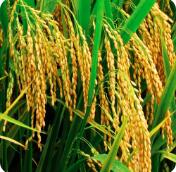DONGQingjun, DONGYubing, LIWeihong, XIEChangyan, ZHANGMiao, LIChuanzhe, CHENChuan, ZHANGAnkang
To explore the growth differences among different green manure varieties and their effects on rice yield, nutrient accumulation and soil properties after turning over, the winter fallow field (CK) was used as the control, three common green manures (Astragalus sinicus L., Vicia villosa var. and Vicia sativa L.) were selected to conduct field experiments to analyze the differences in the characteristics of green manures during the growth period and their effects on rice yield, nutrient accumulation and soil properties after turning over. The results showed that the performance of plant height and biomass in the three types of green manure was as followed: Vicia villosa var. > Vicia sativa L. > Astragalus sinicus L., with Vicia villosa var. being the best and suitable for planting in the region. After turning over green manures, the rice yield significantly increased compared to CK, with the yield under Vicia villosa var. reached 10.47 t/hm2, which was 58.88% higher than that of CK. Green manure turning over could improve the taste value and nutrient accumulation of rice. Compared with CK, the taste value of rice treated with Astragalus sinicus L., Vicia villosa var. and Vicia sativa L. increased by 5.58%, 9.46% and 11.16%, respectively, and total potassium accumulation in rice straw increased by 50.88%, 42.87% and 67.70%, respectively, the total nitrogen accumulation in rice grains increased by 17.25%, 45.62% and 47.74%, respectively and the total potassium accumulation in rice seeds increased by 17.96%, 54.28%, and 48.88%, respectively, the total phosphorus accumulation in rice shoots increased by 11.32%, 62.16% and 27.41%, respectively, the total accumulation of total potassium increased by 45.53%, 44.73% and 64.64%, respectively, with the best comprehensive effect being the Vicia villosa var. and Vicia sativa L.. Green manure could improve soil properties and had the potential to improve soil fertility. Among them, the treatment of Vicia sativa L. had a pH increase of 2.96%, organic matter increased by 10.05%, and total nitrogen content increased by 4.41% compared to CK. The treatment of Astragalus sinicus L. had an organic matter increase of 1.43%, total nitrogen content increase of 24.25%, total phosphorus content increase of 9.20%, and available phosphorus content increase of 10.95% compared to CK. In summary, the biomass and nutrient accumulation of Vicia villosa var. and Vicia sativa L. were both high, and their flipping could improve the yield, taste value and nutrient accumulation of rice. Therefore, they were recommended as green manure varieties for planting in this region; Astragalus sinicus L. and Vicia sativa L. had the potential to increase soil fertility through tillage, while Vicia sativa L. had a better effect. This study could provide a theoretical basis for the utilization of green manure and sustainable agricultural production in the northern Jiangsu region.
